The Economic-Stock Market Disconnect
When I take a step back from what is happening in the economy and look at the major U.S. market averages, I see an incredible disconnect. And I don’t think I’m alone in my analysis.
U.S. Gross Domestic Product (GDP), which is the broadest measure of the value of goods and services in the economy, fell at an annual rate of 32.9% in Q2 2020, the largest decline on record (U.S. BEA data – quarterly data began in 1947). The prior record, a 10.0% annualized decline, occurred in 1958 and coincided with the Asian flu pandemic.
The contraction can be blamed on the unusually swift decline in the economy that began in March and quickly accelerated in April.
It doesn’t take an economist piecing together a complex puzzle to discover the culprit. We know that the lockdowns designed to slow the spread of Covid-19 stifled economic activity and resulted in tens of millions of people out of work. Those job losses weren’t over the course of years or even quarters. They were over weeks, days, and in some cases… overnight.
In April alone, employment fell by a record 20.8 million (St. Louis Federal Reserve). For perspective, 152 million individuals were employed in February.
However, May and June saw a significant improvement from these very depressed levels.
The economy generated a record number of jobs in May and June, erasing one-third of March and April’s job losses (U.S. BLS data).
We also saw big gains in retail sales following a record decline in April (U.S. Census), as businesses began to reopen, furloughed employees returned to work, and stimulus money ($1,200 checks and generous jobless benefits) found its way into the economy.
Nevertheless, the economy remains far below its pre-coronavirus state, as evidenced by the steep decline in Q2 GDP.
Here’s another way to look at the economy with one simple data point. In February, the unemployment rate was at a 50-year low of 3.5%. In July, the jobless rate stood at 10.2% (below April’s 14.7% peak).
Yet the major market averages tell a different story.
As July came to a close, the broad-based S&P 500 Index turned positive for the year, while the tech-heavy NASDAQ Composite is having an impressive year (Table 1). August has extended those gains in many sectors. Some of the larger tech stocks appear to be more insulated from the initial impact of the Covid Recession, and investors have taken notice.
The Federal Reserve’s massive response to the crisis, coupled with a strong response by the federal government, has also encouraged buying. In addition, investors may be looking beyond a dismal Q2, both in terms of GDP and profits, and attempting to price in more favorable conditions later in the year and into 2021.
Very limited visibility
The recession that began in February (per the National Bureau of Economic Research) appears to have ended in April, which would make it the shortest on record. However, it may be months before the NBER, which is the official arbiter of recessions and expansions, decisively calls the bottom.
I don’t want to dismiss May and June’s upturn in the economy. It has been encouraging to see economic activity bounce higher and millions return to work. Still, the outlook remains unusually uncertain.
As states around the country began to reopen, the number of Covid-19 cases has spiked, injecting a new round of uncertainty into the outlook.
In order to contain the virus, some states have slowed reopenings and others have implemented new restrictions.
If we look at what is called “high-frequency data,” such as daily air travel through TSA checkpoints, daily restaurant books via OpenTable, and daily requests for directions via Apple Maps, economic progress slowed or stalled in July.
These metrics don’t correlate perfectly with the economy or the larger S&P 500 firms, but they approximate what is happening in the broader economy.
Further, layoffs remain at historically high levels as measured by weekly jobless claims (Dept. of Labor). Yes, a record number of people are going back to work, but layoffs remain high.
The prescription
The spread of Covid-19 is hampering the recovery and creating a new round of uncertainty. Might this be temporary? Might new cases begin to slow in August and September? Could we see a second wave in the fall and winter? There are no clear answers.
Today, the path of the economy is linked to the virus. Hence the unusual degree of uncertainty.
Yet, there has been encouraging news regarding a vaccine. If and when developed and readily available, a vaccine could be just the right prescription that could greatly increase confidence to venture back into restaurants, movie theaters, airplanes and sports arenas.
As Fed Chairman Jerome Powell said in [[https://www.federalreserve.gov/mediacenter/files/FOMCpresconf20200729.pdf prepared remarks]] in late July, “The path forward for the economy is extraordinarily uncertain and will depend in large part on our success in keeping the virus in check.”
Social distancing, masks, and all CDC-recommended safety protocols are a step in the right direction. However, a vaccine and/or an effective treatment are probably the best way to enhance mobility and help us move past this difficult chapter in our country’s history.
The economy may not be the same when the pandemic is eventually in the rearview mirror, but we are a resilient people, we will persevere, and we will adapt.
Table 1: Key Index Returns (as of the end of July 2020)
| MTD% | YTD% | |
| Dow Jones Industrial Average | 2.4 | -7.4 |
| NASDAQ Composite | 6.8 | 19.8 |
| S&P 500 Index | 5.5 | 1.3 |
| Russell 2000 Index | 2.7 | -11.3 |
| MSCI World ex-USA* | 2.3 | -10.5 |
| MSCI Emerging Markets* | 8.4 | -3.2 |
| Bloomberg Barclays US Aggregate Bond TR | 1.5 | 7.7 |
Source: Wall Street Journal, MSCI.com, Morningstar, MarketWatch
MTD return: Jun 30, 2020-Jul 31, 2020
YTD return: Dec 31, 2019-Jul 31, 2020
*in US dollars
To round out this week’s newsletter, I wanted to shift some of the focus off of the general state of things, to your personal finances. This week, we’re going to talk about:
Roth IRA Considerations
Choosing a Roth IRA
There are many vehicles to choose from as you travel the road to retirement. One of the more advantageous means you may utilize to build a nest egg is the Roth IRA.
A [[https://www.irs.gov/retirement-plans/roth-iras Roth IRA]] is an Individual Retirement Account that allows you to contribute after-tax dollars into a savings or brokerage account.
The after-tax dollars won’t allow you to claim a tax deduction as you might on a traditional IRA, but withdrawals are [[https://www.schwab.com/ira/roth-ira/withdrawal-rules not subjected to federal income taxes]] when withdrawn after 59 ½ years of age, as long as the account has been opened for at least five years.
Like a traditional IRA, interest, dividends, and capital gains are sheltered from taxes inside the Roth.
Tax time
Subject to income limits, [[https://www.irs.gov/retirement-plans/plan-participant-employee/retirement-topics-ira-contribution-limits you may contribute]] up to $6,000 per year if you are under 50 and $7,000 per year if you are 50 or over.
We are past the tax deadline for 2019, but it’s not too early to begin thinking about 2020. However, let’s be aware of [[https://www.irs.gov/retirement-plans/plan-participant-employee/amount-of-roth-ira-contributions-that-you-can-make-for-2020 income limits]].
For someone who is single (or head of household), you are eligible to make the full contribution to a Roth if your modified adjusted gross income (MAGI) is under $124,000 for the tax year 2020. The limit gradually declines between $124,000-$139,000. Above $139,000, Roth contributions are not allowed.
If you are married and filing separately, the rules become a little more complex so let’s talk if you are in this category.
If you are married and file jointly (or qualified widow/er), MAGI must be under $196,000 for the tax year 2020, while the contribution limit is gradually phased out between $196,000-$206,000. Above $206,000, Roth contributions are not allowed.
You may contribute to a Roth and a traditional IRA, but you may not exceed the prescribed annual limits.
In addition to tax-free withdrawals, Roth IRAs are not subjected to required minimum distributions.
Further, under the SECURE Act, an inherited Roth IRA (and a traditional IRA) must be [[https://www.kiplinger.com/article/retirement/t032-c032-s014-2-ira-changes-to-consider-right-for-secure-act.html distributed within 10 years]] if the beneficiary is not your spouse (in most cases).
Unlike a traditional inherited IRA, the distributions are tax free. And beneficiaries may let the Roth account grow tax free until year 10, when the distribution is required.
High-income taxpayers and the backdoor Roth
If you have a healthy six-figure income, hard limits prevent you from contributing directly to a Roth. But income limits don’t exist for converting a traditional IRA into a Roth, which leaves a loophole for high-income taxpayers.
Long story short, you may contribute to a non-deductible traditional IRA, open a Roth IRA, convert the contribution into the Roth IRA, and pay the taxes on any appreciation.
Conceptually, the [[https://www.schwab.com/resource-center/insights/content/backdoor-roth-is-it-right-you backdoor Roth strategy]] is relatively straight-forward if you have no other IRAs. If there are other IRAs in your name, taxes are pro-rated. This may, or may not make it worthwhile for you to do. There are also strategies that may help minimize the pro-rata issue. We’ll avoid getting into the minutiae, since it really is dependent on your specific situation… but, we’d be happy to work the numbers out for you, as that is what we are here for.
Before considering a Roth IRA or a backdoor Roth, you may want to consult with your tax advisor. It can be a great financial strategy, but it needs to be carefully planned out… you don’t want any negative surprises at tax time!
Closing thoughts…
As I’ve said before, we are in some “crazy times.” I don’t have a better way to say it, unless I use the word “unprecedented.” That word is often used by marketers incorrectly as a way to hype up what they are discussing, but I don’t think that’s much of an understatement when we talk about the events of 2020.
I understand the uncertainty facing all of us. We are grappling with an economic and a health care crisis. It’s something none of us have ever faced. As a firm, we are trying hard to address various issues with you… both on a macro level and personal one. We have an open-door policy. If you have any questions or concerns, that is what your advisor is here to help you answer. Please reach out to them for specific advice on your plan or investments, or to myself for other questions.
If you are currently a client, I’m honored by the trust you have in choosing our firm for advice on your personal financial planning and investment management strategy. If you are not yet a client, we would welcome the discussion, if you feel like we may be of help.
Warmest Regards,
Steve
Steven A. Boorstein, PharmD, CFP®
President & CIO
RockCrest Financial LLC

